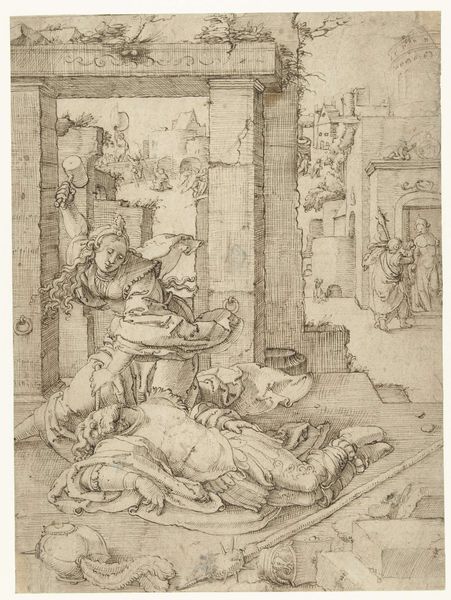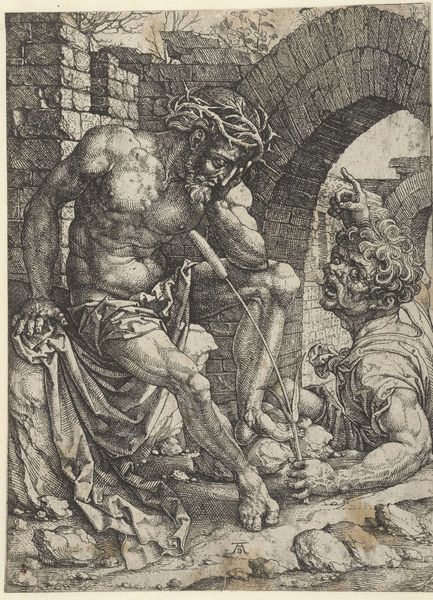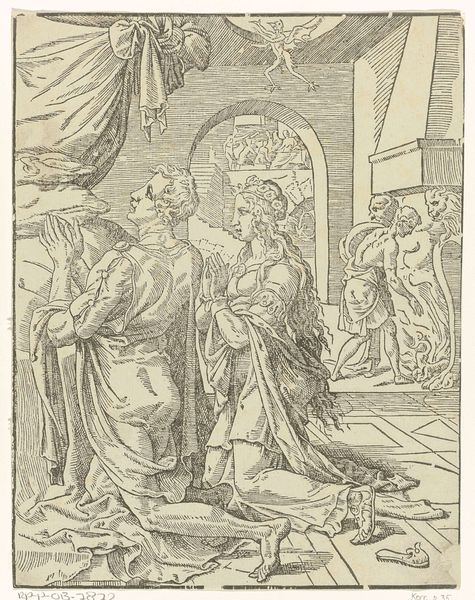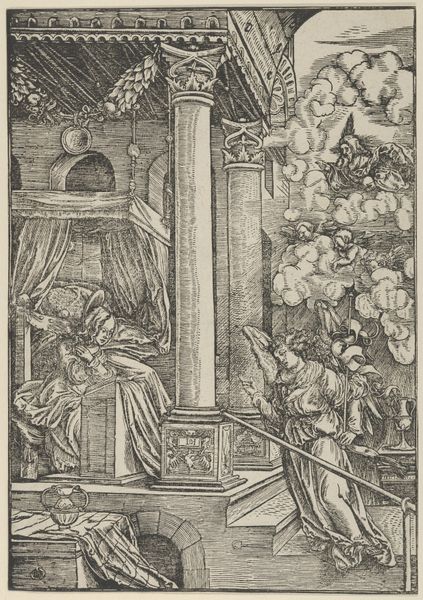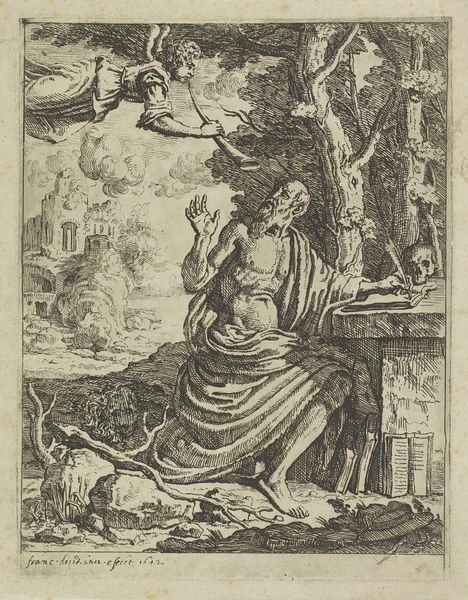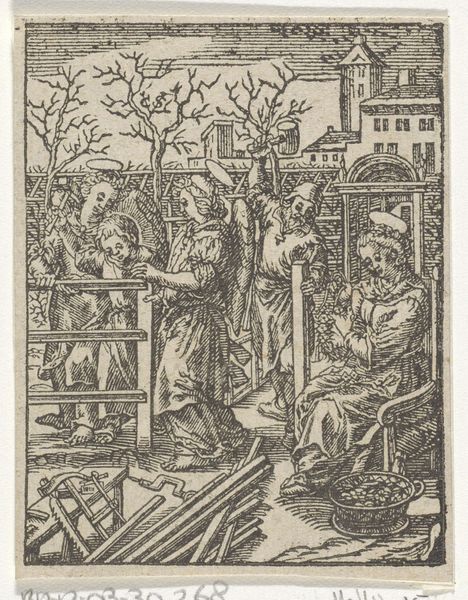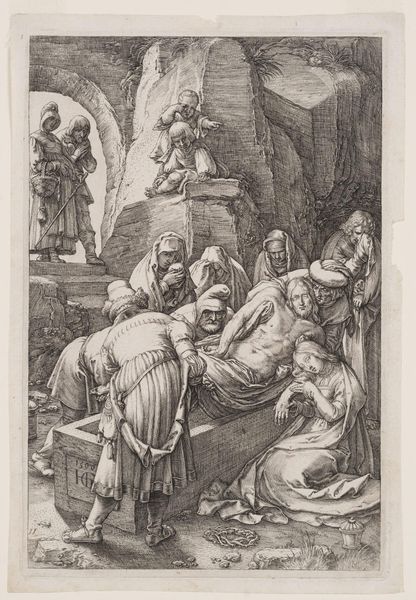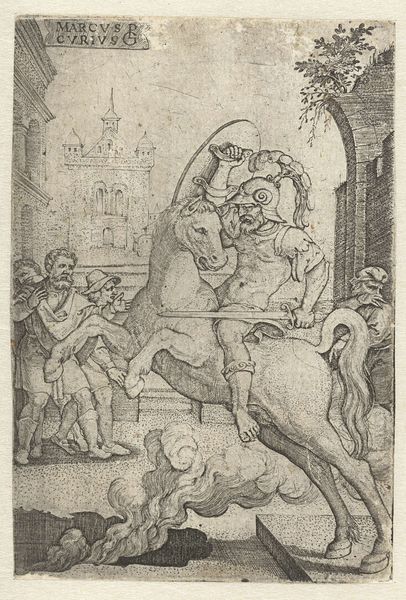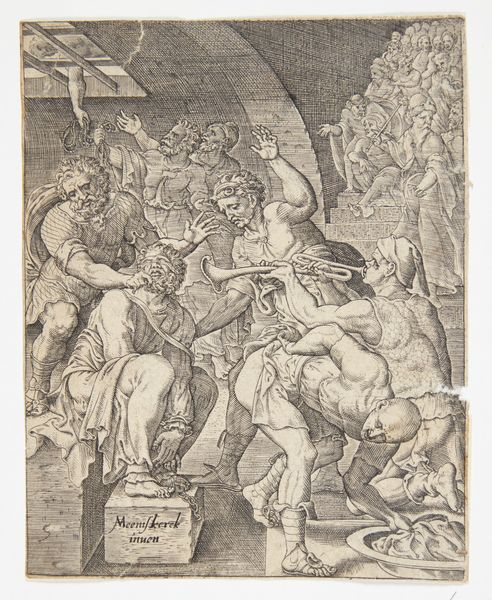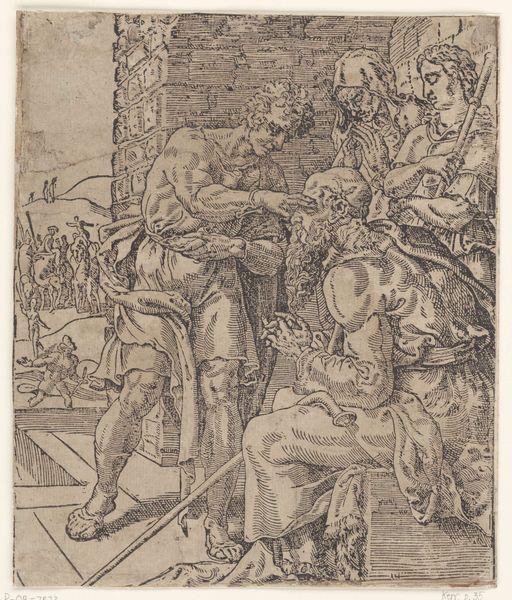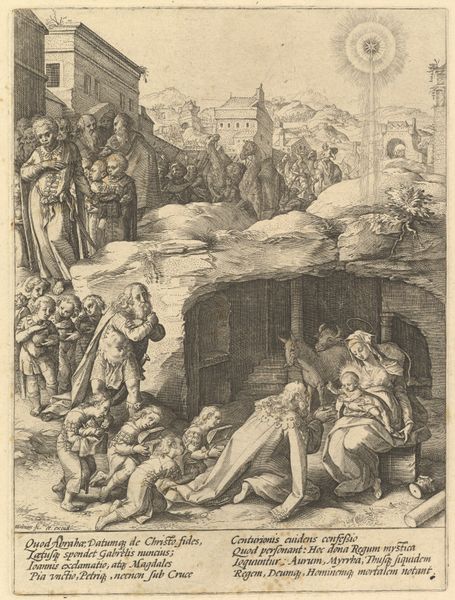
print, etching
#
narrative-art
# print
#
pen illustration
#
etching
#
figuration
#
11_renaissance
#
history-painting
#
northern-renaissance
Dimensions: height 245 mm, width 190 mm
Copyright: Rijks Museum: Open Domain
Curator: Dirck Volckertsz Coornhert created "Tobits blindheid" around 1548. It's currently held at the Rijksmuseum and rendered in etching. What are your immediate thoughts looking at this print? Editor: A sense of muted drama washes over me, an understated melancholy. It's small but densely packed with information, like a play set on a tiny stage. Curator: That feeling tracks with its narrative—the etching depicts a scene from the Book of Tobit, where Tobit loses his sight after bird droppings fall into his eyes. Seeing the political tensions of 16th century Europe in the tale of a blind man regaining vision after suffering under oppression is interesting. Editor: Absolutely, the socio-political echoes here are loud. Notice how Tobit is rendered—almost prostrate, clearly diminished. The architecture around him, simultaneously classical and crumbling, amplifies the personal and societal decay he's experiencing. There’s such potent visual rhetoric about marginalization here. Curator: And yet there's a counter-narrative too. Look at the industrious figure spinning wool in the background, and the activity outside – signs of resilience. This piece functions so well by illustrating everyday life as a juxtaposition between normal events occurring, like daily life alongside this central figure, highlighting his struggle, placing it inside the larger historical canvas that allows one to compare their respective lives to find more profound meaning. Editor: Indeed, Coornhert brilliantly uses the space. The layering creates an intentional tension; Tobit's isolation visually clashes with the surrounding world’s persistence, asking who gets to be ‘seen’ and valued. Also notice how Coornhert’s style adheres so strictly to traditional art yet its thematic undercurrent of Tobit is a modern idea. The piece’s politics of representation makes you think. Curator: And what institutions were permitted to tell and represent in its day is also an active point. Religious narratives provided platforms to address those politics during the Renaissance, thus emphasizing its message more. Editor: A thought-provoking testament to how historical and personal tribulations are interconnected, rendered with a sensitive and questioning hand. It’s powerful to see how such pieces prompt dialogue about cultural equity through faith and what it takes to get a historical piece approved.
Comments
No comments
Be the first to comment and join the conversation on the ultimate creative platform.
